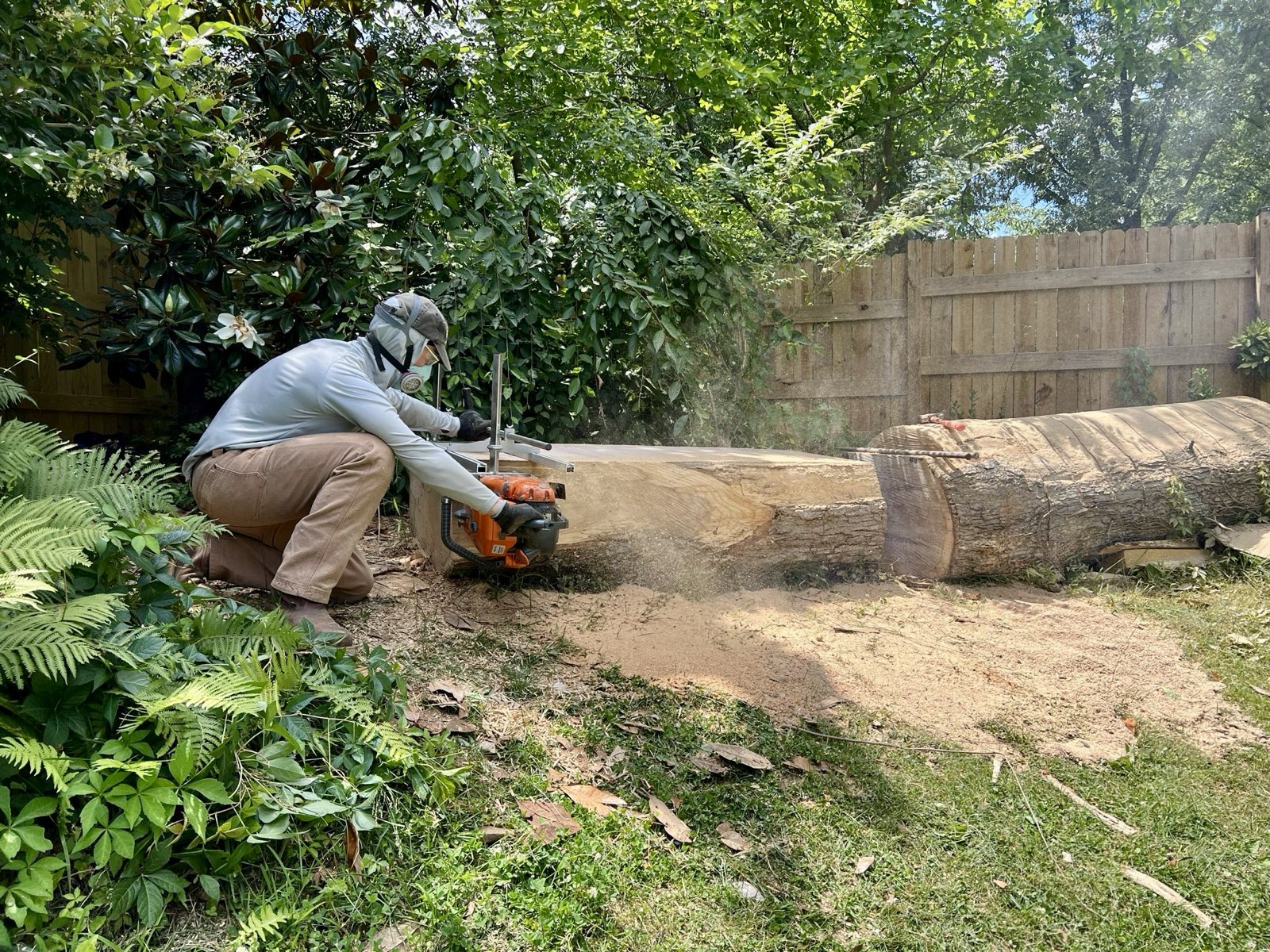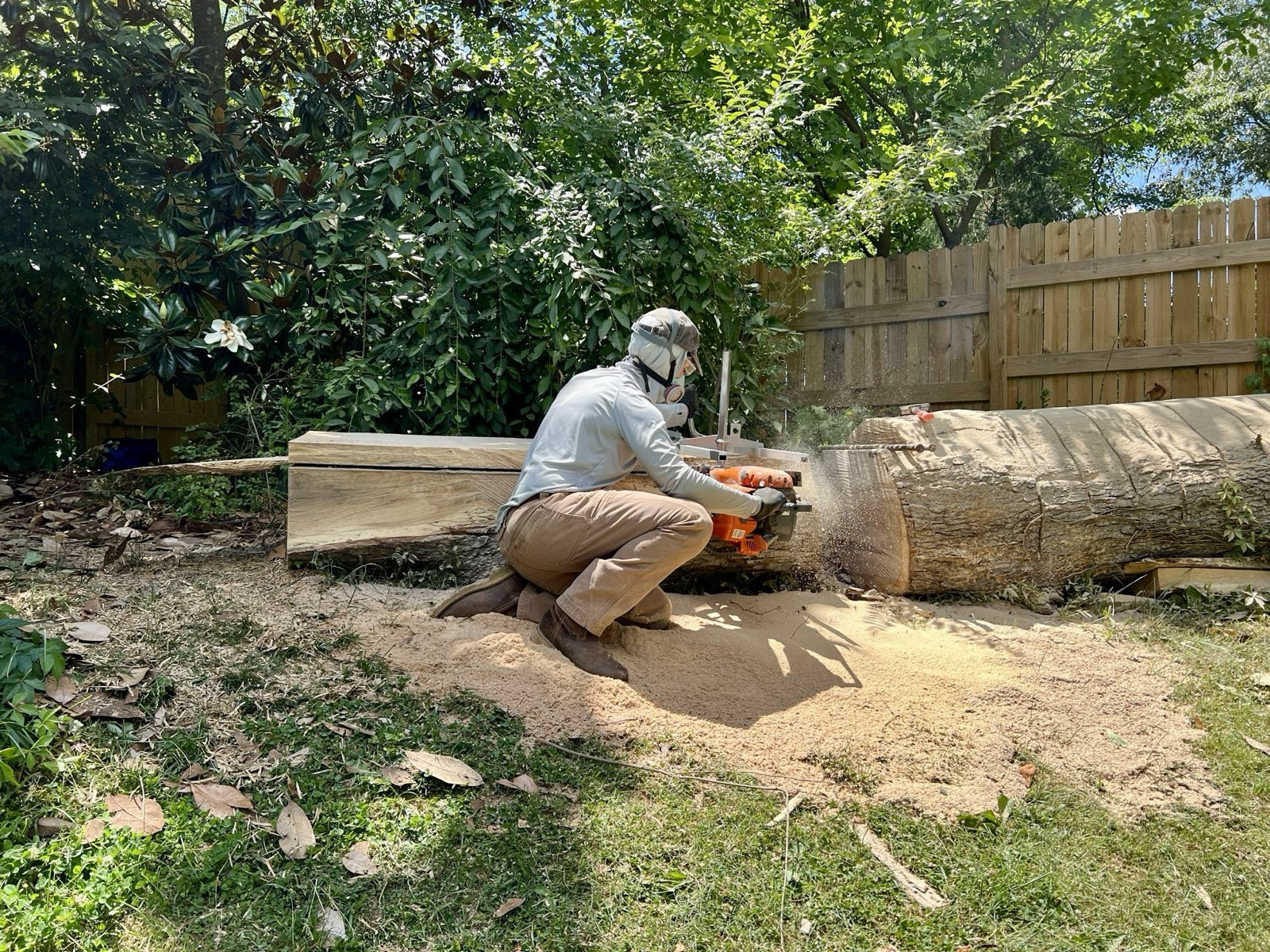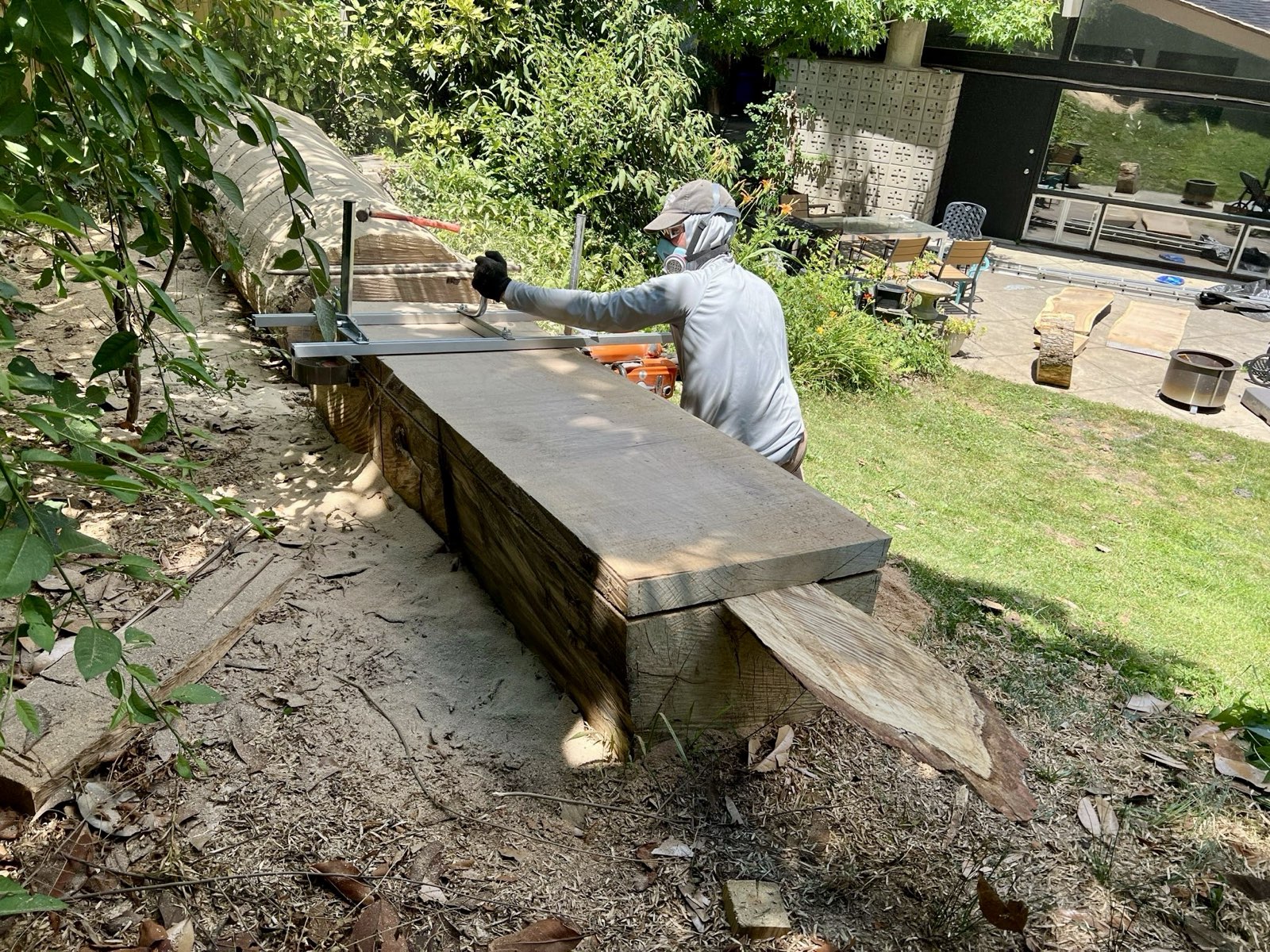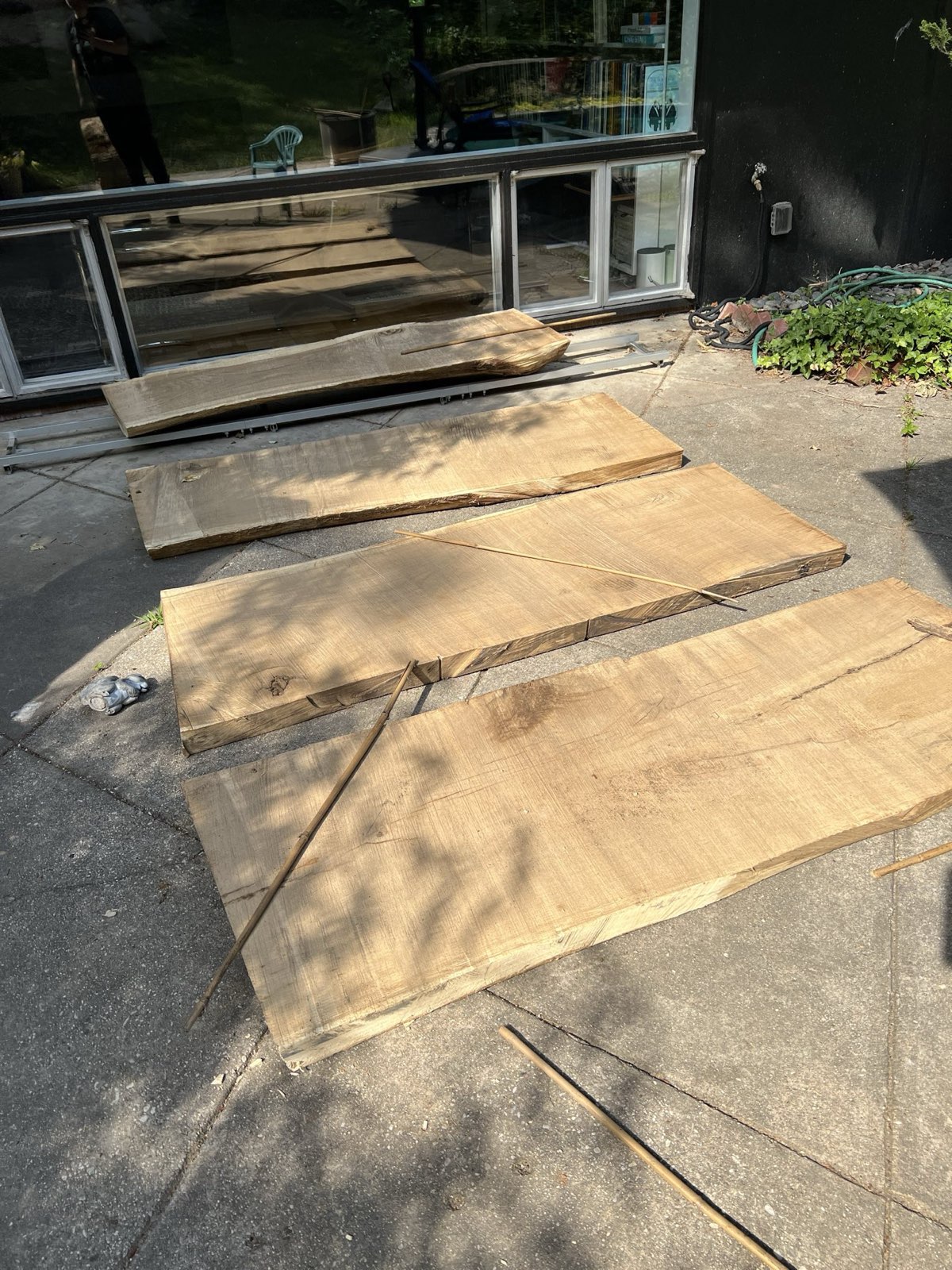chainsaw logmilling
contents
overview
A couple years ago, we lost a 118-year-old white oak tree to lightning. The majority of the wood which resulted from its dismantling was chopped to be used in a wood stove. A large section trunk was laid down for milling, however, that I might one day make a desk or table out of slabs cut from it.
This was very difficult.
I have milled lumber with a regular band saw mill, that’s not so bad. A chainsaw mill is an object lesson in last resorts. I don’t regret I did this, but neither would I recommend it to others.
why
You mill your own wood because it’s a great way to use a tree which needed to come down anyway. It’s also a great way to get the cut of wood you want, not the cut of wood which is most economical for the sawyer to produce and sell at a lumber yard.
In my case, I wanted slabs from the center of the log, where the grain runs essentially parallel to the length of the tree.
This is often called “quarter-sawn” or “rift-sawn” wood, except these are slabs and not boards, so not only are we employing a technique considered wasteful (uneconomical) at a commercial scale, we’re getting a full width of log from the process, whereas most wood you find in a commercial setting would be half-width.
The effect is beautiful and subtle, the grain ends up with very nice flecks, fiddles, and straight lines atypical of cuts made too far from the center of the log.
process
- Get a chainsaw with a bar at least four inches longer than the diameter of the log you’re working on. I had a 40“ log here, so I got a 44“ chainsaw bar. This was barely adequate.
- Get a chainsaw mill frame. This is basically a frame which clamps on to your chainsaw bar.
- Get a long ladder, or a chainsaw mill guide bar. You’ll use this as a flat plane on which to run the first cut, since the log is rounded on top. Subsequent cuts will be done on the flat surface you create from this cut.
- Get numerous, perhaps four for a log this size, ripping saw chains. It’s important that they are ripping chains, since we are running with the grain, which is much more difficult than running through the grain (as when you cut rounds).
- Get a breathing mask, lots of fuel, gloves, steel toe boots, eye protection, ear protection, idk just protect yourself. You’re going to be running this saw for hours. It’s fatiguing and hard and dusty.
- Affix the ladder or mill guide bar to the top of the log. This is a critical operation - get it level and straight, with no bends or bows. I made a small L bracket to screw mine to the top of the log, but there are numerous ways to affix it, just make sure your method leaves a clean, clear top surface of the bar on which to run the saw. If you use screws, make sure you know how deeply they penetrate into the log, since, you don’t want to hit them with your saw blade.
- Mount the chainsaw on the saw mill frame. Adjust it so it will make the first cut below any screws you used to affix the guide bar or ladder. Get it mounted on the guide bar and fire it up.
- Move slowly, deliberately, allowing the sawdust to clear as you go. It’ll be fibrous sawdust, since you’re cutting with the grain, easily cleared but voluminous.
- As you move along, the piece above the saw may bow a bit, use small wedges of wood scrap to prop it after you pass with the saw, so that the saw doesn’t bind.
- When you’ve made the first complete pass, you’ll have a log with a flat top. Burn the rounded piece you just cut off for firewood. You’re done with the guide bars too, subsequent cuts will be made on the flat top of the log you have just created.
- Set the saw mill frame depth to the depth you’d like your slabs to be.
- Make another pass, this time riding the saw mill frame along the flat top of the log. Wedge as you go, so that the piece above the saw blade doesn’t bind up the saw.
- Repeat. For hours.
I’ll be making a desk or table out of these slabs. They’re drying for now, though, before I properly finish them.
photos




